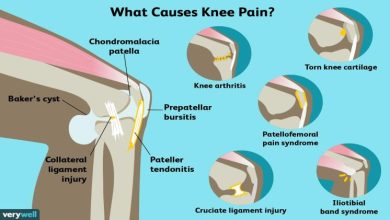Everything You Should Know About Diabetic Neuropathy

Diabetic neuropathy is a nerve disorder caused by diabetes. It can be mild, causing very few problems, or it can be severe and cause debilitating pain. Nerve damage from Adrian diabetic neuropathy affects the lower extremities, like the feet and legs but can affect any part of your body, including your hands and arms.
The diagnosis of diabetic neuropathy is based on your symptoms and a physical examination. A doctor may ask about any other health conditions, medications you take, lifestyle habits that could be contributing to the condition (such as smoking or inadequate exercise), and how long you have had diabetes.
These are some of the causes of diabetic neuropathy:
- High blood sugar levels: High glucose levels in the blood can damage nerves over time and lead to nerve pain.
- Nerve degeneration: Diabetes causes changes in nerve structure, which can cause pain.
- Poor circulation: Diabetes can also impair circulation, leading to poor blood flow to your extremities and further impairing nerve function.
- Vitamin deficiencies: Certain vitamins and minerals, such as B and D, are essential for healthy nerve function. A deficiency in these nutrients can lead to neuropathy.
To help screen for diabetic neuropathy, your doctor may order tests, including:
- Nerve conduction studies – measure how fast signals move through a nerve
- Electromyography – measures the electrical activity of muscles at rest and during contraction
- Quantitative sensory testing – measures how well you feel sensations such as pain, temperature, or touch
Types of diabetic neuropathy
These are the types of diabetic neuropathy you should know about:
- Peripheral neuropathy – affects the longest nerves in your body and can cause pain, numbness, tingling, and muscle weakness
- Autonomic neuropathy – affects the autonomic (involuntary) nervous system and can interfere with digestion, sweating, blood pressure regulation, bladder control, sexual response, and more.
- Focal neuropathy – typically affects a single nerve or group of nerves in the arms, legs, head, or torso.
Some symptoms of diabetic neuropathy include pain, numbness, tingling, and burning sensations in the feet or hands. It is important to talk to your doctor if you experience any of these symptoms so they can properly diagnose and treat the condition. Visit here for more descriptions of Capital One 360
Treatment options for diabetic neuropathy
These are some of the treatment options:
Medications
Did you know that certain medications can help relieve symptoms of diabetic neuropathy? Depending on the type and severity of your condition, your doctor may prescribe pain relievers, anti-seizure drugs, antidepressants, or other medications.
Exercise and physical therapy
Regular exercise and physical therapy can improve circulation to affected nerve cells and reduce symptoms. Talk to your doctor about a plan that is right for you. Some of the exercises recommended include stretching, strengthening, and aerobic activities.
Lifestyle changes
Making lifestyle changes such as quitting smoking, managing stress, and eating healthy can help manage or reduce symptoms of diabetic neuropathy. You should also inspect your feet regularly for cuts or sores and visit your doctor for regular checkups to monitor the condition.
Complementary therapies
Complementary therapies, such as acupuncture and massage therapy, can help reduce pain and improve circulation. These therapies are not typically covered by insurance, but they may be an option for some people.
If you experience any symptoms of diabetic neuropathy, It is important to talk to your doctor at Michigan Pain Specialists.





